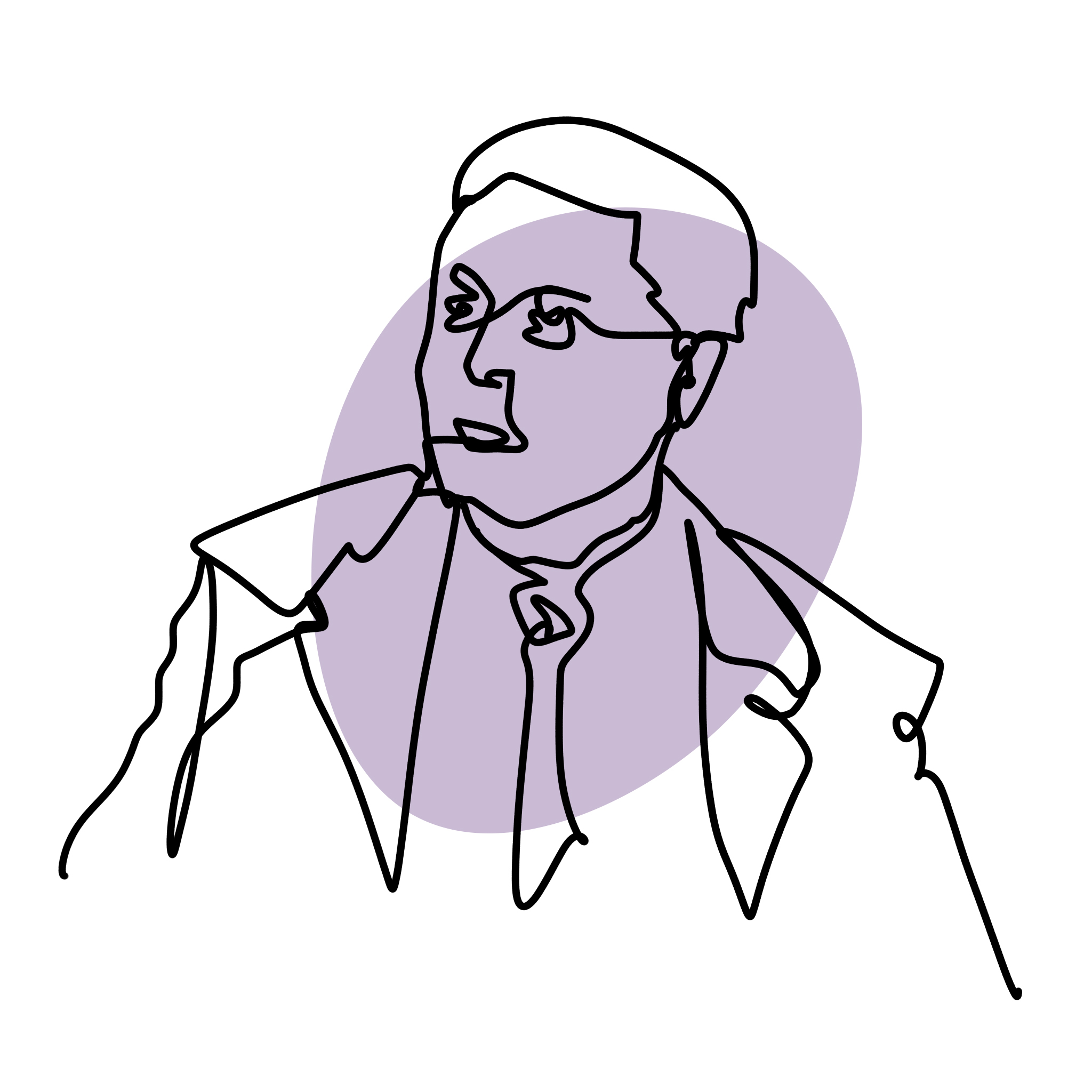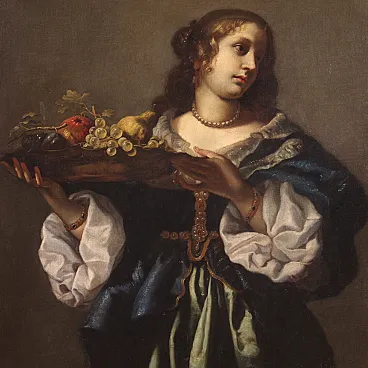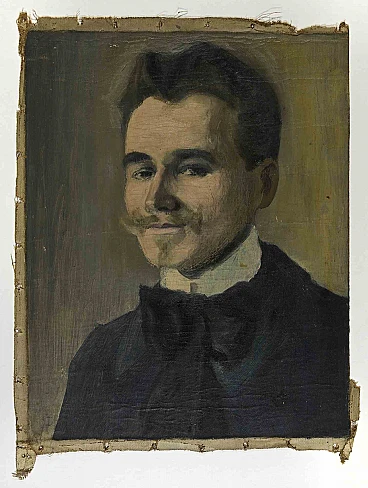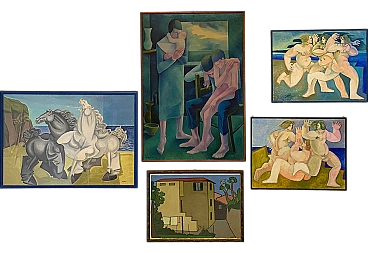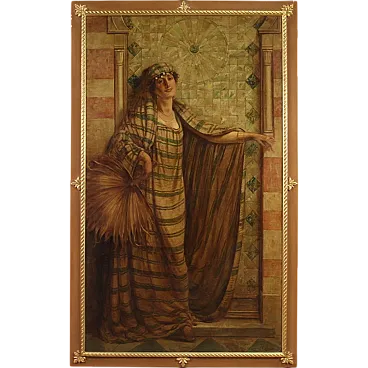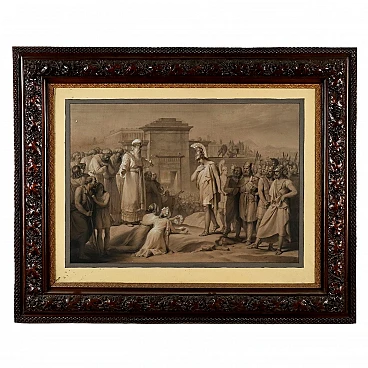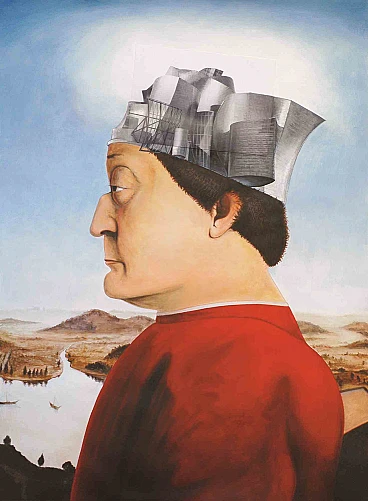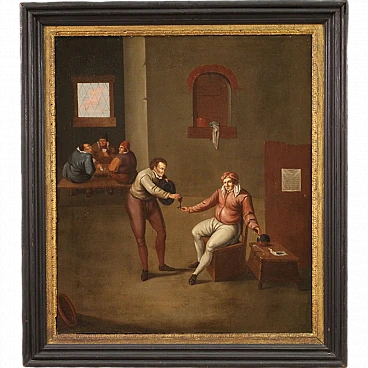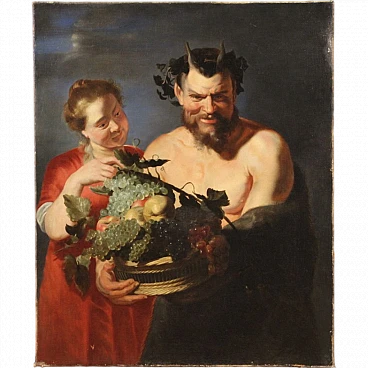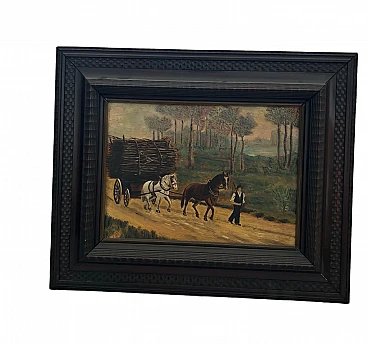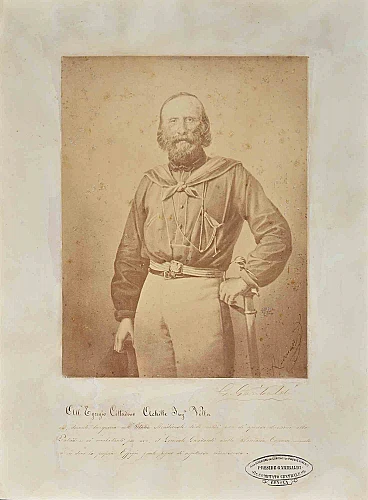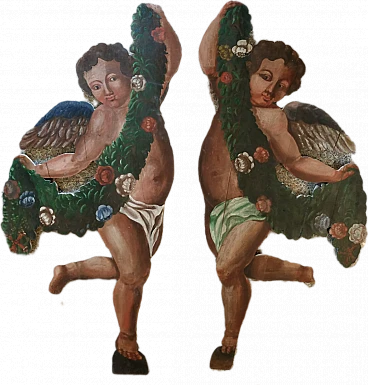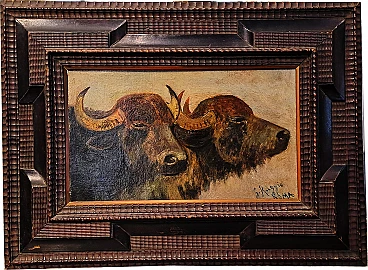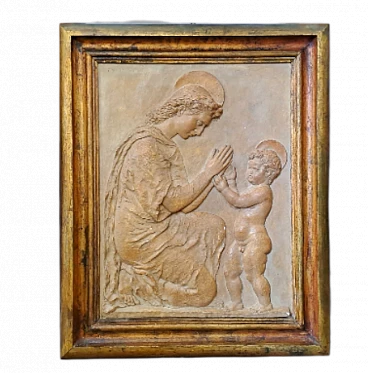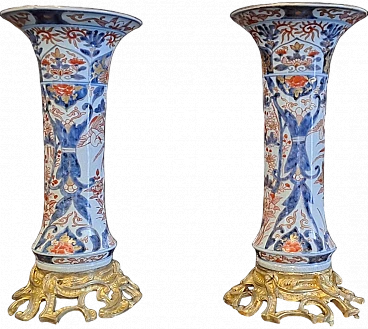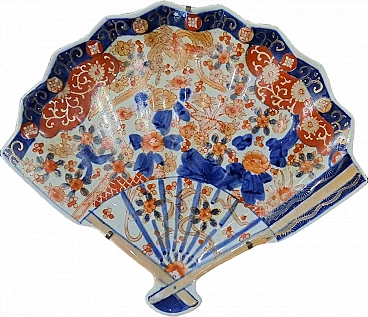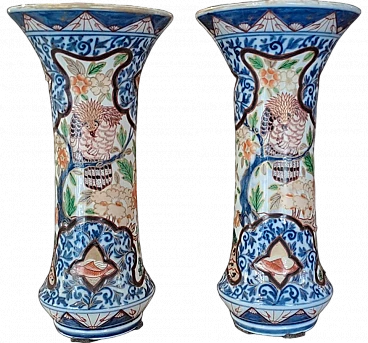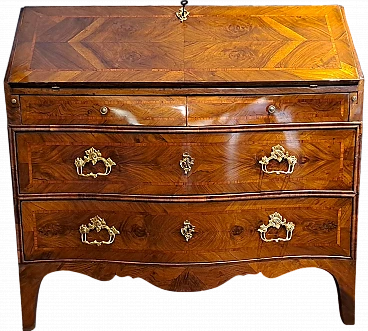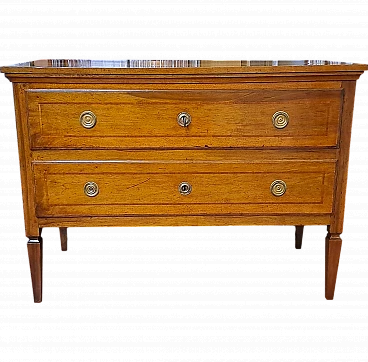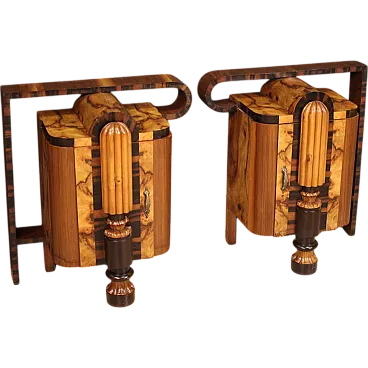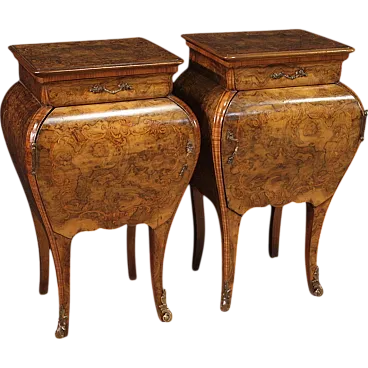Oil on canvas depicting a view of Venice. The masterfully executed work depicts the lagoon city from the Giudecca Canal to St. Mark's Square. One can clearly see the Doge's Palace, the domes of St. Mark's Basilica and the tower in front of it. The atmosphere is rarefied, the sky leaden and the calm sea is ploughed by a few sailing boats. Signed at lower right and dated 1889. The painting has an original frame and gilded wooden frame (not contemporary). The dimensions are as follows: 93 x 59 cm including the frame, 69.5 x 36 cm the canvas alone. De Stefani, Vincenzo. Born in Verona on 6 March 1859 to Stefano and Caterina Brizio. After completing his classical studies, he was a pupil of Napoleone Nani at the Cignaroli academy in his city and of Cesare Maccari in Rome (1883). After a stay in Capri, he returned to Verona (1886), married and settled in Torri del Benaco, on Lake Garda. But in 1887, having achieved success at the Espos. nazionale in Venice, he moved to that city, where he taught ornamental painting at the Accademia. His exhibition activity had begun in 1883 in Rome and Milan (with Lungo l'Adige); this was followed by Turin in 1884 (with Vespero), the Promotrice in Florence (with Rusticale) in 1885 and Verona (with Alla botte and Cravatta nera) in 1886. Then came his success at the Venice National Exhibition (1887) with Meriggio, Convalescenza and Nel tempo delle cicale. An eclectic painter, D. moved with ease from portraits to landscapes, from dramatic and episodic paintings to genre paintings and simple realistic notation. His early works were influenced by F. Carcano and the Lombard painting of those years, as he himself declared in a letter (curriculum vitae, 1895): ‘always wrongly considered to be a pupil of Carcano, I however shared his ideas’. D., whom Costantini (1939) defines as a ‘futurist’, was the first in the Veneto area to take part in the renewal that was sweeping the peninsula, adhering to a frank naturalism. In 1890 he began an intense activity as a fresco painter, with the decoration of a villa in Nice, followed by that of a villa on Lake Garda (1898-1905) and another in Crocetta Trevigiana (1906-1908), now destroyed (Costantini, 1939). In 1890 he also depicted some war episodes in the tower of San Martino della Battaglia (Desenzano), which can still be seen today: on the second floor Assault of the grenadiers of the Guard in the Battle of Pastrengo and on the fourth Assault of the zig-zag batterza in the Crimean War. But the most famous of all his wall decorations is that of the new Provincial Council Chamber on the ground floor of the Palazzo della Prefettura (formerly Palazzo Corner) in Venice, for which he won the competition with his friend Giuseppe Vizzotto Alberti. The work, inaugurated in August 1897, had only been started a year earlier. The frieze with the Doge's Procession is painted in encaustic on three walls (length 42.5 m; height 2.20 m): Venice is personified, in brocade robes, in the central panel of the ceiling (Triumph of Venice) and in the four tondi that surround it, with allegories of her domains (Sea, Land) and her virtues (Wisdom and Law, or Science and Justice, cf. Il Popoloromano, 6 Sept. 1897; L'Illustrazione italiana, 5 Sept. 1897, p. 159; 17 Oct. 1897, pp. 259 f.; A. Stella, in Natura e arte, VII [1897-98], pp. 883 f.). After his appearances in Milan (Brera) in 1891 (with L'accusa: cf. L'Illustrazione ital., 21 June 1891, p. 390) and at the National Exhibition in Turin in 1898 (with Le nostre ragazze and Ritratto di signora), around the beginning of the 20th century there was a downturn in his production, which lasted almost a decade. He then exhibited again in 1910, again at Brera (with Gli assenti), then in Venice in 1912, at the Biennale with an entire room (thirty-five works; cf. E. De Lupi, in La Serenissima, 30 May 1912, pp. 88 f.; U. Ojetti, La decima Esposizione..., Bergamo 1912, pp. 23, 110 f.; F. Sacchi, in the catalogue, pp. 78 f.; list of works, pp. 79 f.). In the period 1914-17 he devoted himself to etching (etching, drypoint), under the guidance of E. Brugnoli. An etching (Mother and Daughter) is at the National Gallery of Modern Art in Rome. From 1922 (with Fiore rosso) he changed his style and began an extraordinarily productive period. The forms are again simpler (compare for example Mammina); the open air disappears and the figures return indoors between unadorned walls. In an organic series of large paintings (Il crollo, Il racconto, Le buone parole, Questa è la mia felicità) he recounts in flat forms, in an almost elementary syntax, passionate circumstances and facts; this romanticisation of life had a considerable hold on the public. He continued his portrait production, in which he had been very active in Rome, Venice, Trieste and elsewhere already in his early period. His participation in group exhibitions also continued; in Venice, at the Biennales of 1922, 1924 and 1932; as well as in 1930 at the Fondazione Bevilacqua La Masa, in 1935 at the Exhibition for the 40th anniversary of the Biennale and in Rome in 1931 at the Quadriennale (p. 165 of the catal.). His personal exhibitions were also important: in Milan, at the Galleria Pesaro, in 1918 and 1928; in Venice, at the Galleria Boralevi, in 1931, with around sixty paintings, studies and sketches executed in the last two years in Cadore and Alto Adige (cf. La Gazzetta di Venezia, 7 Dec. 1931). His works are to be found in the National Gallery of Modern Art in Rome (Benaco marino), in the Gallery of Modern Art in Venice (Autoritratto, 1901; Armonie di sera, 1906; Meriggio, Quiete del mezzogiorno, In osteria, 1887); the Civic Museum in Verona (Un'ombra, 1908; Lisa), the Civic Museums in Udine (Mercato di Santa Margherita) and in numerous private collections. In Verona, in the Church of Ss. Apostoli, an altarpiece with the Transito di s. Giuseppe is preserved. D. was awarded two gold and one silver medal, respectively in Munich (1891), at the Columbian Exhibition in Genoa (1892) and by the Ministry of Education (for A lavorofinito). He died in Venice on 2 Apr. 1937 (necrol. in Il Gazzettino, 4 Apr. 1937; Il Piccolo della sera, 6 Apr. 1937). Two retrospective exhibitions were dedicated to him, in Milan (Galleria Dedalo) in 1939 (cf. La Sera, 21 Nov. 1939; Corriere della sera and Il Sole, 23 Nov. 1939) and in Verona (Saloni della Gran Guardia) in 1940 (L'Arena di Verona, 8 Feb. 1940). Regular certificate of authenticity with photo is issued. We guarantee a reply to your mail within 24 hours. Registered as a Peirti and CTU at the Court of La Spezia.










 SILVER Seller in La-Spezia, Italia
SILVER Seller in La-Spezia, Italia






.png)



